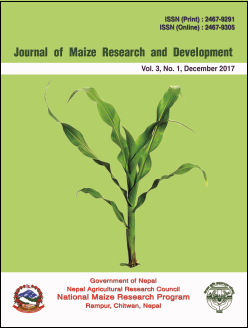Climate change and maize agriculture among Chepang communities of Nepal: A review
DOI:
https://doi.org/10.3126/jmrd.v3i1.18922Keywords:
Climate change, maize farmers, coping strategies and Chepang communitiesAbstract
This paper reviews recent literature concerning effects of climate change on agriculture and its agricultural adaptation strategies, climate change impacts on Chepang communities and their maize farming. Climate change is perhaps the most serious environmental threat to agricultural productivity. Change in temperature and precipitation specially has greater influence on crop growth and productivity and most of these effect are found to be adverse. Climate change has been great global threat with global temperature rise by 0.83 °C and global sea level rise by 0.19 m. Poor countries of the world are more vulnerable to changing climate due to different technological, institutional and resource constraints. In context of Nepal, practices like tree plantation, lowering numbers of livestock, shifting to off farm activities, sloping agricultural land technology (SALT) and shifting cultivation are most common coping strategies. Chepang, one of the most backward indigenous ethnic groups of Nepal are also found to perceive change in the climate. Perception and adaptation strategies followed by different farmers of world including Chepang is mainly found to be effected by household head’s age, size of farm, family size, assessment to credit, information and extension service, training received and transportation. Maize is second most important crop in Nepal in which increase in temperature is favorable in Mountain and its yield is negatively influenced by increase in summer rain and maximum temperature. Local knowledge of indigenous people provides new insights into the phenomenon that has not yet been scientifically researched. So, government should combine this perceptive with scientific climate scenario and should conduct activities in term of adoption strategies and policies to insist targeted and marginalized farmers.




